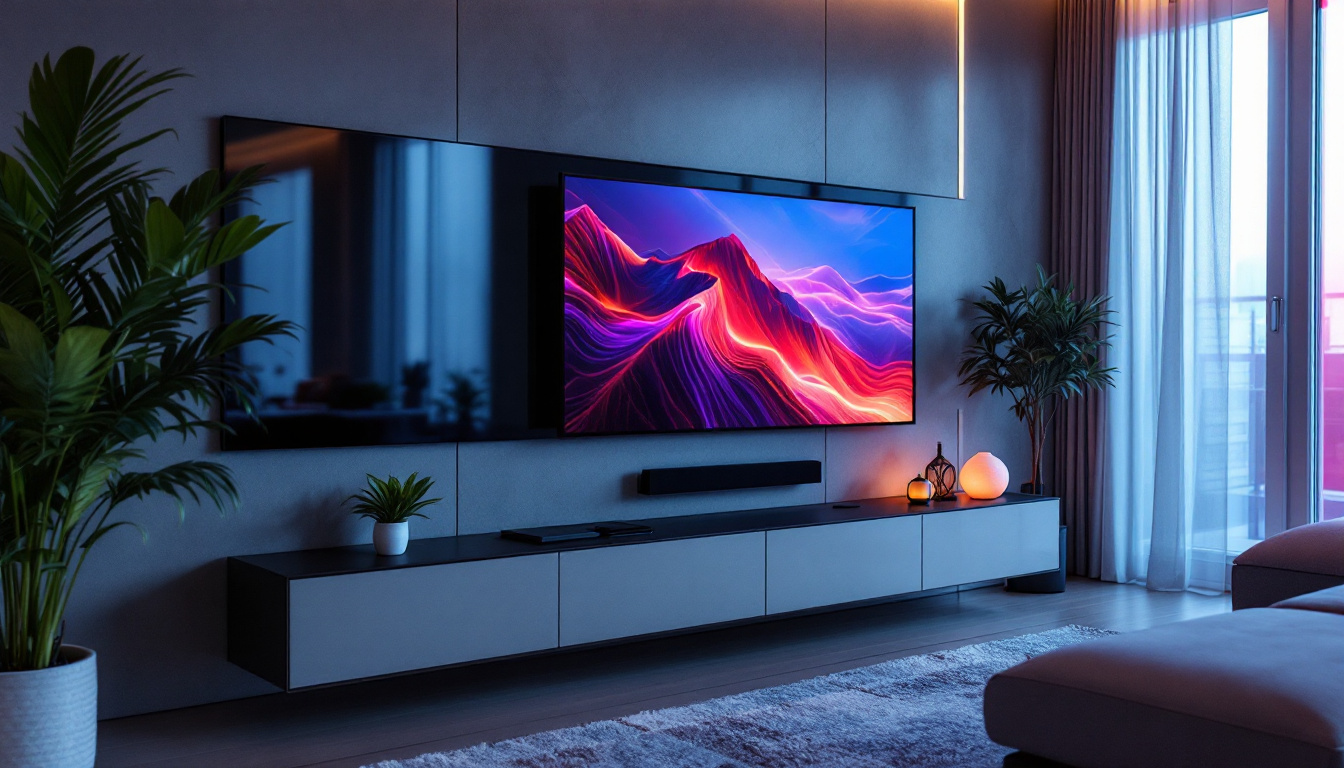In the world of modern displays, the debate between LCD (Liquid Crystal Display) and LED (Light Emitting Diode) technology often arises. While both technologies are widely used in televisions, computer monitors, and other devices, understanding their differences is crucial for making informed decisions about which display type best suits individual needs. This article will delve into the intricacies of LED displays, clarify common misconceptions, and compare them with LCD technology.
Understanding LCD Technology
LCD technology has been a staple in the display industry for decades. It utilizes liquid crystals sandwiched between two layers of glass or plastic. When an electric current passes through these crystals, they align to allow varying degrees of light to pass through, creating images on the screen.
How LCD Displays Work
At the core of an LCD display is its backlighting system, which is typically composed of fluorescent tubes or LEDs. The backlight illuminates the liquid crystals, which then manipulate the light to produce images. The quality of the backlight significantly affects the display’s brightness and color accuracy.
One of the primary advantages of LCD technology is its ability to produce sharp images with high resolution. This makes it ideal for applications requiring precise detail, such as graphic design or gaming. However, traditional LCDs often struggle with contrast and color vibrancy compared to their LED counterparts.
In addition to these fundamental components, LCD displays also incorporate various technologies to enhance performance. For instance, advancements like In-Plane Switching (IPS) and Twisted Nematic (TN) panels have emerged, each offering different benefits in terms of viewing angles and response times. IPS panels are particularly favored for their superior color reproduction and wider viewing angles, making them popular among professionals in fields like photography and video editing.
Advantages of LCD Displays
LCD displays are known for their thin and lightweight design, making them easy to mount on walls or fit into compact spaces. They also tend to consume less power than older CRT (Cathode Ray Tube) displays, which contributes to their popularity in both home and commercial settings.
Moreover, LCD technology is less prone to screen burn-in, a phenomenon where static images can permanently affect the display quality. This makes LCDs a safer choice for environments where static images are frequently displayed, such as digital signage.
Another noteworthy advantage of LCDs is their versatility in various applications. From smartphones and tablets to large-scale televisions and computer monitors, LCD technology has adapted to meet the demands of different devices. Furthermore, with the rise of smart technology, many modern LCD displays now come equipped with touch capabilities, allowing for interactive experiences that enhance user engagement. This adaptability ensures that LCD technology remains relevant in an ever-evolving digital landscape, catering to both casual users and professionals alike.
Exploring LED Technology
LED technology, while often confused with LCD, is fundamentally different. LED displays use diodes that emit light when an electric current passes through them. This technology can be used in various applications, including televisions, computer monitors, and outdoor displays. The evolution of LED technology has revolutionized the way we consume visual media, providing not only brighter images but also a more immersive viewing experience that captivates audiences.
The Mechanics of LED Displays
LED displays can be classified into two main types: direct-lit and edge-lit. Direct-lit LED displays have a grid of LEDs placed directly behind the screen, allowing for uniform brightness and improved contrast. On the other hand, edge-lit displays use LEDs positioned around the edges of the screen, which can lead to uneven lighting in some cases. The choice between these types often depends on the intended use; for instance, direct-lit displays are preferred in environments where color accuracy and brightness consistency are paramount, such as in graphic design studios or high-end home theaters.
One of the standout features of LED technology is its ability to produce deeper blacks and more vibrant colors. This is largely due to the way LEDs can be dimmed or turned off entirely in specific areas of the screen, enhancing contrast ratios significantly. This capability is particularly beneficial for watching movies or playing video games, where dynamic scenes with varying light levels can be rendered with stunning realism, drawing viewers into the action.
Benefits of LED Displays
LED displays are renowned for their energy efficiency. Compared to traditional LCDs, they consume less power, making them an environmentally friendly choice. Additionally, their longer lifespan means fewer replacements and less waste over time. This longevity not only reduces costs for consumers but also lessens the environmental impact associated with electronic waste, as fewer devices need to be manufactured and disposed of.
The versatility of LED technology is another significant advantage. It can be used in various formats, including large outdoor billboards, small screens in handheld devices, and everything in between. This adaptability has contributed to its widespread adoption across multiple industries. From vibrant advertising in bustling city centers to sleek displays in modern offices, LED technology has become a staple in both commercial and personal settings. Furthermore, advancements in LED technology continue to emerge, such as flexible LED screens that can be bent and shaped to fit unique designs, opening up new possibilities for creative applications in architecture and design.
Comparing LCD and LED Displays
While both LCD and LED technologies have their merits, a direct comparison can help clarify which is more suitable for specific applications. Understanding the nuances of each technology is essential for consumers and businesses alike.
Image Quality
When it comes to image quality, LED displays generally outperform traditional LCDs. The ability of LEDs to achieve higher contrast ratios and more vibrant colors makes them the preferred choice for those seeking the best visual experience. However, newer LCD technologies, such as IPS (In-Plane Switching) panels, have made significant strides in closing the gap. IPS panels provide wider viewing angles and better color reproduction compared to older TN (Twisted Nematic) panels, making them a viable option for graphic designers and photographers who require accurate color representation. Additionally, advancements in backlighting technology, such as local dimming, have allowed some LCDs to enhance their performance, further blurring the lines between these two display types.
Energy Efficiency
LED displays are typically more energy-efficient than their LCD counterparts. This efficiency not only reduces electricity costs but also lessens the environmental impact of using these devices. As energy costs continue to rise, this factor becomes increasingly important for consumers and businesses looking to minimize their carbon footprint. Moreover, the lower heat output of LED displays contributes to a cooler operating environment, which can be particularly beneficial in settings like offices or homes where multiple screens are in use. This thermal efficiency can also extend the lifespan of the display, as excessive heat can lead to hardware degradation over time.
Cost Considerations
Pricing can vary significantly between LCD and LED displays. Generally, LED displays tend to be more expensive upfront due to their advanced technology and superior performance. However, considering their energy efficiency and longer lifespan, the total cost of ownership may favor LED displays in the long run. It’s also worth noting that the market for both types of displays has evolved, leading to a wider range of options at various price points. Consumers can now find budget-friendly LED models that offer decent performance, making it easier to select a display that fits both their needs and their budget. Additionally, as technology continues to advance, the price gap between LCD and LED displays is likely to narrow, making high-quality visual experiences more accessible to a broader audience.
Applications of LCD and LED Displays
Both LCD and LED displays find applications in various sectors, from consumer electronics to industrial uses. Understanding where each technology excels can guide purchasing decisions.
Consumer Electronics
In the realm of consumer electronics, LED displays have gained popularity for televisions and computer monitors due to their superior picture quality and energy efficiency. high-definition LED TVs offer vibrant colors and deep blacks, making them ideal for cinematic experiences.
On the other hand, LCDs are still prevalent in budget-friendly options and smaller devices like tablets and smartphones. Their ability to produce sharp images at lower resolutions makes them suitable for these applications.
Commercial and Industrial Use
In commercial settings, LED displays are often used for digital signage, advertising, and information displays due to their brightness and visibility in various lighting conditions. Their energy efficiency also makes them a cost-effective choice for businesses looking to reduce operational expenses.
Conversely, LCD technology is frequently used in control rooms, medical imaging, and other professional environments where color accuracy and detail are paramount. The choice between the two often depends on the specific requirements of the application.
Future Trends in Display Technology
The display technology landscape is continually evolving, with innovations emerging at a rapid pace. As the demand for higher resolution and better color accuracy increases, both LCD and LED technologies are adapting to meet these needs.
Advancements in LED Technology
Recent advancements in LED technology include the development of MicroLED and MiniLED displays. These innovations promise to deliver even better picture quality, with improved contrast ratios and color accuracy. MicroLED, in particular, offers the potential for self-emissive pixels, similar to OLED technology, but with greater brightness and longevity.
LCD Innovations
LCD technology is also undergoing significant improvements. Newer technologies like Quantum Dot LCD (QLED) have emerged, enhancing color accuracy and brightness levels. These advancements aim to bridge the gap between traditional LCDs and LED displays, providing consumers with more choices.
Conclusion
In summary, the choice between LCD and LED displays depends on various factors, including budget, intended use, and personal preferences. LED displays generally offer superior image quality, energy efficiency, and versatility, making them a popular choice for many applications. However, LCD technology remains relevant, especially in budget-conscious markets and specific professional environments.
As technology continues to evolve, both LCD and LED displays will likely see further enhancements, providing consumers with even more options to choose from. Ultimately, understanding the strengths and weaknesses of each technology will empower users to make informed decisions that best suit their needs.
Whether for personal use or professional applications, the right display technology can significantly enhance the viewing experience, making it essential to consider all aspects before making a purchase.
Discover LumenMatrix’s Innovative LED Display Solutions
Ready to elevate your visual experience with the latest in LED display technology? Look no further than LumenMatrix, a pioneer in crafting LED display modules that transform any space into a dynamic visual spectacle. Whether you’re in need of an Indoor LED Wall Display for your business, an Outdoor LED Wall Display for advertising, or any of our specialized solutions like Vehicle LED Displays, LED Sports Displays, or Custom LED Displays, LumenMatrix has you covered. Embrace the future of visual communication and check out LumenMatrix LED Display Solutions today to see how we can help you make a lasting impression and communicate your message with unparalleled clarity and impact.































